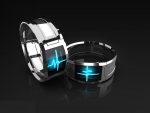WHO physical activity goals unmet in many teens with hemophilia A
Researchers used Fitbits to assess exercise habits of young patients

Teens and young adults with moderate and severe hemophilia A on continuous preventive treatment show levels of physical activity similar to young people without the disease, but less than half of teenagers met the weekly physical activity levels recommended by the World Health organization (WHO), a study reports.
“We encourage clinicians to have a particular focus on promoting [physical activity] for this group,” the researchers wrote in the study, “Physical activity in Norwegian teenagers and young adults with haemophilia A compared to general population peers,” which was published in Haemophilia.
New, efficient therapies for hemophilia have let patients be more physically active without an increased risk of bleeds. In fact, the World Federation of Hemophilia now recommends regular physical activity to improve patients’ quality of life.
A physically active lifestyle can improve both physical and mental health in hemophilia patients, with research showing regular physical activity reduces bleeds and improves joint, bone, and muscle health. Most studies of physical activity in people with hemophilia were based on self-reporting in questionnaires and activity diaries, however, leading researchers at the University of Oslo, Norway to use a commercial activity tracker called Fitbit Charge 3 to objectively assess the exercise habits of young patients.
They compared specific parameters — steps, intensity volumes, activity types, and exercise frequencies — in teenagers and young adults with hemophilia A to see if WHO recommendations were being met.
The study (NCT04181697) enrolled 40 male patients (mean age, 19.5) with moderate (7.5%) and severe (92.5%) hemophilia A. The patients were on preventive treatment and were negative for inhibitors, neutralizing antibodies that may lower replacement therapies’ effectiveness.
Preventive treatment with factor VIII (FVIII) — the missing or defective blood clotting factor in people with hemophilia A — was administered at a mean weekly dose of 70 international units per kilogram of body weight (IU/kg). The number of bleeds in the last 12 months was near zero and patients had no hemophilia-relevant co-morbidities (co-occurring health conditions).
Researchers also used data from about 60,000 users of the Fitbit activity tracker as a control group.
Differences in physical activity levels
Each participant used the Fitbit for 12 weeks (84 days) on their nondominant wrist. Excluding unregistered days, 3,353 measurement days were obtained. From these, 3,023 days were considered valid and used in the analysis. The mean number of valid measurement days per week was 6.3 for hemophilia patients and 5.8 for controls.
The mean number of steps taken a day was similar in hemophilia patients and controls (9,783 vs. 9,295). However, hemophilia patients spent a longer time performing light physical activity than controls (mean, 227 vs. 192 minutes a day).
In total, 2,712 exercise sessions were registered for the hemophilia group, with the majority (95%) detected automatically by the Fitbit. The remaining 5% were registered manually by the participants.
The most common activities for both groups were walking and “sport.” Hemophilia patients showed higher percentages of walking and sport per week, in general. The mean weekly number of exercise sessions were 5.6 for hemophilia patients and 3.3 for controls.
Over 12 weeks, the hemophilia group spent a mean of 399 minutes (six hours, 40 minutes) in moderate to vigorous physical activity, while controls spent a mean of 375 minutes (six hours, 15 minutes). Teenagers with hemophilia engaged in moderate to vigorous physical activity for longer periods than the control group — a mean of 414 minutes a week (almost seven hours) versus 342 minutes (five hours, 40 minutes).
Adults with hemophilia and controls spent a similar amount of time in moderate to vigorous physical activity (386 vs. 384 minutes a week; about six hours, 30 minutes).
Only 40% of teenagers with hemophilia A met the WHO recommended weekly minimum for their age group — 420 minutes (seven hours) of moderate to vigorous physical exercise. This was even lower for controls, where the goal was reached by only 8%.
Almost all adults in both groups (95% in the hemophilia group, 100% in the control group) reached the WHO minimum recommendation of 150 minutes (two hours, 30 minutes) of moderate to vigorous physical exercise a week.
Over the 12 weeks, the recommendations were met for 5.1 weeks (42.9%), with a mean of 10.5 weeks for teenagers with hemophilia. In adult patients this ranged from six to 12 weeks.
These findings suggest young hemophilia A patients on continuous preventive treatment “are as physically active as their general population counterparts,” the researchers wrote, noting that access to early preventive treatment lets them “have similar opportunities for [physical activity] as others.” Still, “a considerable proportion” of teenagers don’t meet the recommended weekly amount of moderate-to-vigorous physical activity, they said.







